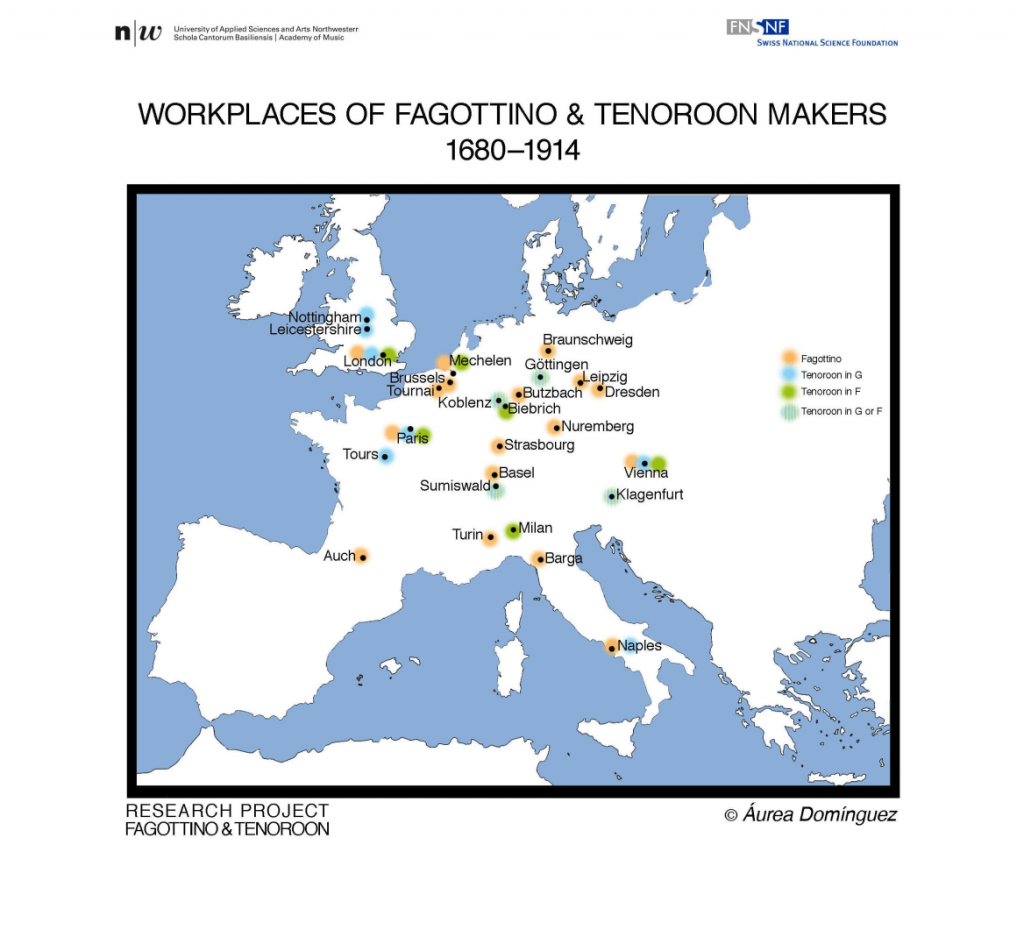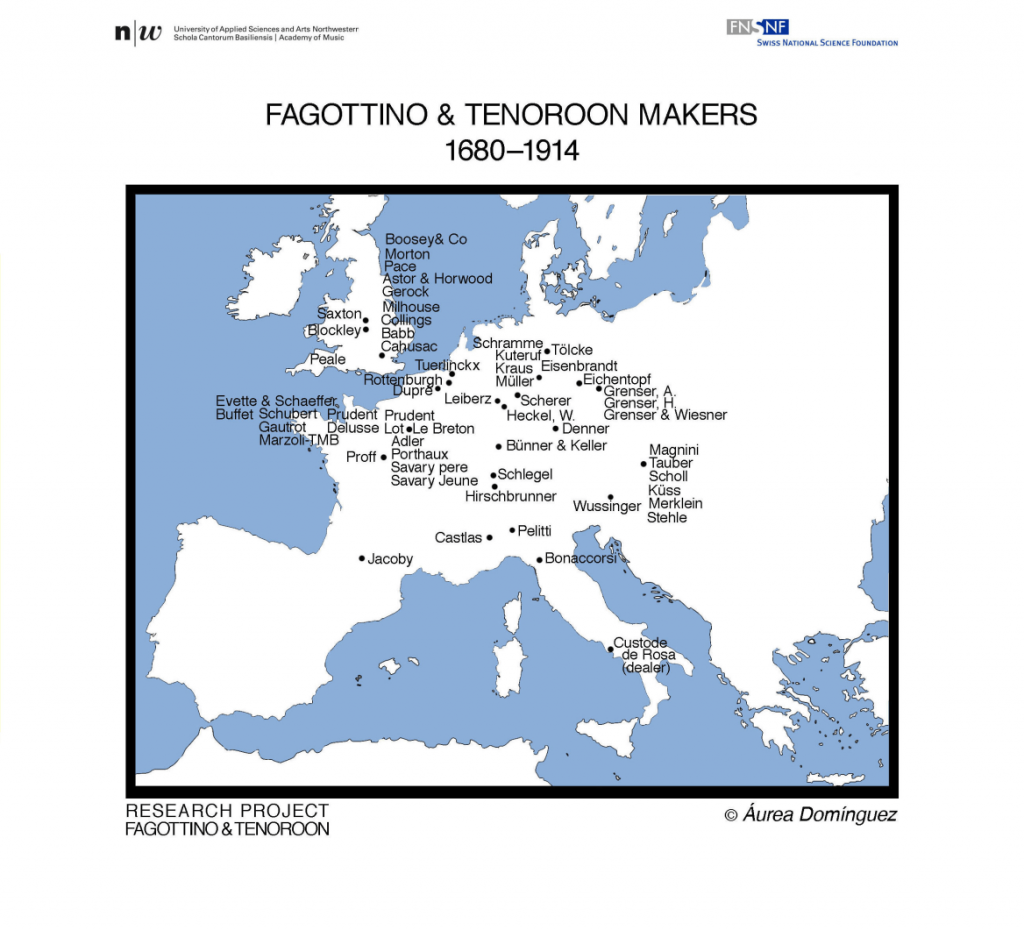Timeline
The Golden Age of Fagottini and Tenoroons
Áurea Domínguez
Many important woodwind instrument makers of the eighteenth and nineteenth centuries also built small-sized bassoons, as a glance through the instrument catalogue will reveal. The maps below illustrates that fagottini and tenoroons were being built throughout all of Europe, with a substantial list of instrument makers were producing various models at different times.


The following video depicts which makers were active when and where. Furthermore, it highlights instruments described in our catalogue and the approximate date they were built, making the distinction between fagottino (orange), tenoroon in G (blue) and tenoroon in F (green). The video already shows a tendency, based on our current research, that most fagottini were built in what is nowadays considered Germany, around the mid-1700s; tenoroons in G were distributed more equally around Europe, arriving in the UK at the end of the eighteenth and early nineteenth centuries. On the other hand, tenoroons in F appeared relatively late in the second quarter of the nineteenth century in Paris, but afterwards they spread rapidly from Vienna to London. The second half of the nineteenth century saw a decrease in the building of these instruments, and from the early nineteenth century, only sporadic makers located in Paris and London were interested in the construction of small-sized bassoons.